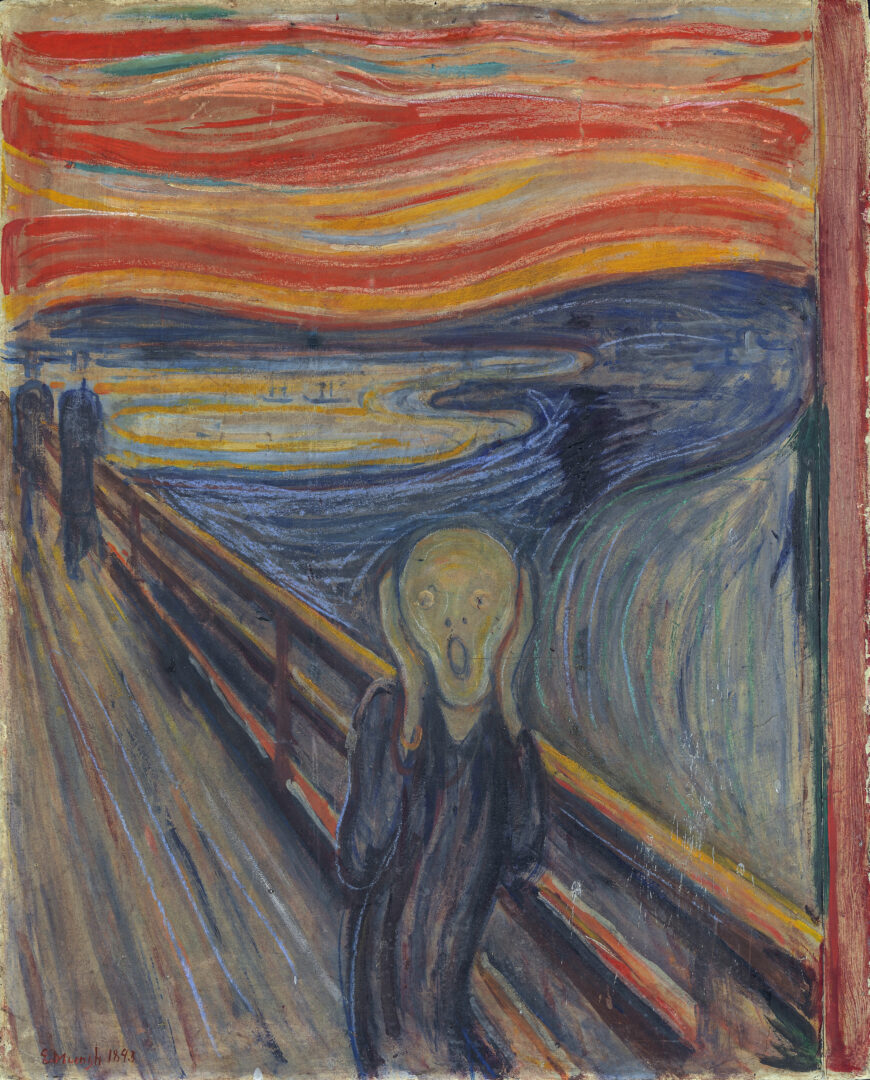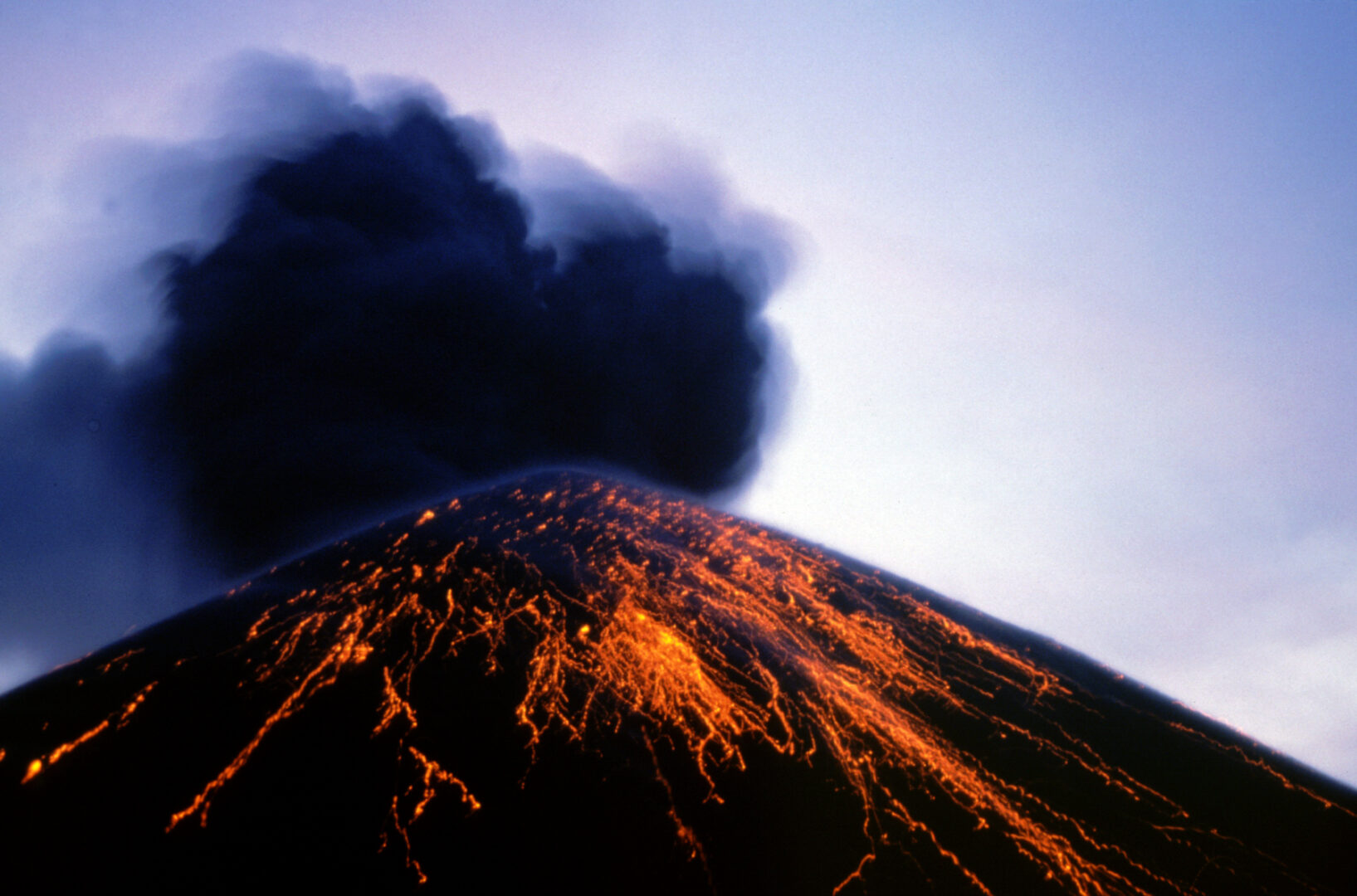SDSU scientist describes how environmental forces have forged Frankenstein and other eerie works
By: Bryana Quintana
Imagine a world where dust fills the air, temperatures are freezing, and the sky is the color of flames. It’s no horror film — this is a realistic picture of the aftermath of major volcanic eruptions.
As explained by Jessica Whiteside, chair of San Diego State University’s Earth and Environmental Sciences department, these eruptions may have even influenced literary and artistic works from “Frankenstein” to “The Scream,” pieces that reflect the inextricable bond between humans and the environment.
Volcanic eruptions start hot with scorching magma streaming through the inner belly of the earth, causing the volcano to cough up steaming gasses and other materials. In the surrounding area, living things die from the blast, wildfires break out, and for the largest eruptions, long-term global warming can follow.
But there’s also a cold side to these eruptions.
“When volcanoes erupt, they spew out carbon dioxide and methane, two heat-trapping gasses that we’re worried about in our current atmosphere as well,” Whiteside said. “But they also throw up sulfur aerosols, the opposite of heat-trapping gasses.”
After reaching the troposphere, these sulfur compounds mix with water vapor to form droplets of sulfuric acid that obstruct sun rays, reflecting the sunlight into space and leading to cooling periods in the post-eruption years.

Jessica Whiteside holds a vial of volcanic ash collected by geologist and army surgeon Henry Carter 100 miles north of Krakatoa on August 27, 1883. This dust, which fell thickly on the decks, masts, ropes, and sails of a small British sailing vessel, is a light gray color and represents a mix of minerals and glass violently ejected during the eruption. (Paul Olsen/Columbia University)
When Indonesia’s Mount Tambora erupted in 1815, it heaved up enough debris to cover an area the size of New York State in 650 feet of dust.
“For human civilization, Tambora is the most powerful volcanic eruption on record,” Whiteside said. “The amount of energy it produced would be something akin to three times all of the world’s nuclear arsenals blowing up at once.”
With Tambora being located in the low latitude tropical region, winds quickly swept the enormous amount of volcanic debris across both hemispheres so that sunlight was shut out and temperatures plummeted around the globe.
“For about two years after Tambora, the world was put into a cold snap where agriculture failed and epidemics broke out,” Whiteside said.
Out of this bleak volcanic winter, a monster was born.
“‘Frankenstein’ was inspired by the climatic conditions at the time,” Whiteside said. “Mary Shelley wrote the novel as an expression of the human angst of dealing with the frigid temperatures and dimmed light from the faint sun.”
For all the ravages produced by such massive volcanic eruptions, they also generate a strangely beautiful effect.
“The sulfur aerosols, they’re not good for agriculture, but they do create beautiful sunsets because of the way they alter the atmospheric chemistry,” Whiteside said. “After Tambora, the sunsets and sunrises would have been absolutely glorious. The sky would have been piercing red with swirls of purples, blues, and yellows.”

Edvard Munch’s The Scream (GiorgioMorara – stock.adobe.com)
Also in the Indonesia region, a place with many volcanoes, the Krakatoa eruption of 1883 played out similarly to Tambora’s almost 70 years before. The event impacted people worldwide and some believe Edvard Munch’s 1893 painting “The Scream,” captures the otherworldly change in the sky which resulted from it, as he wrote:
I was walking along the road with two friends – then the Sun set – all at once the sky became blood red – and I felt overcome with melancholy. I stood still and leaned against the railing, dead tired – clouds like blood and tongues of fire hung above the blue-black fjord and the city. My friends went on, and I stood alone, trembling with anxiety. I felt a great, unending scream piercing through nature.
“Geology is always linked to the human condition,” Whiteside said. “These volcanic events shaped humanity and our perception of our interaction with the natural world. They show how intertangled the world actually is, especially when talking about anything related to changes to the Earth and our environment.”
Learn more about SDSU’s Department of Earth and Environmental Sciences
